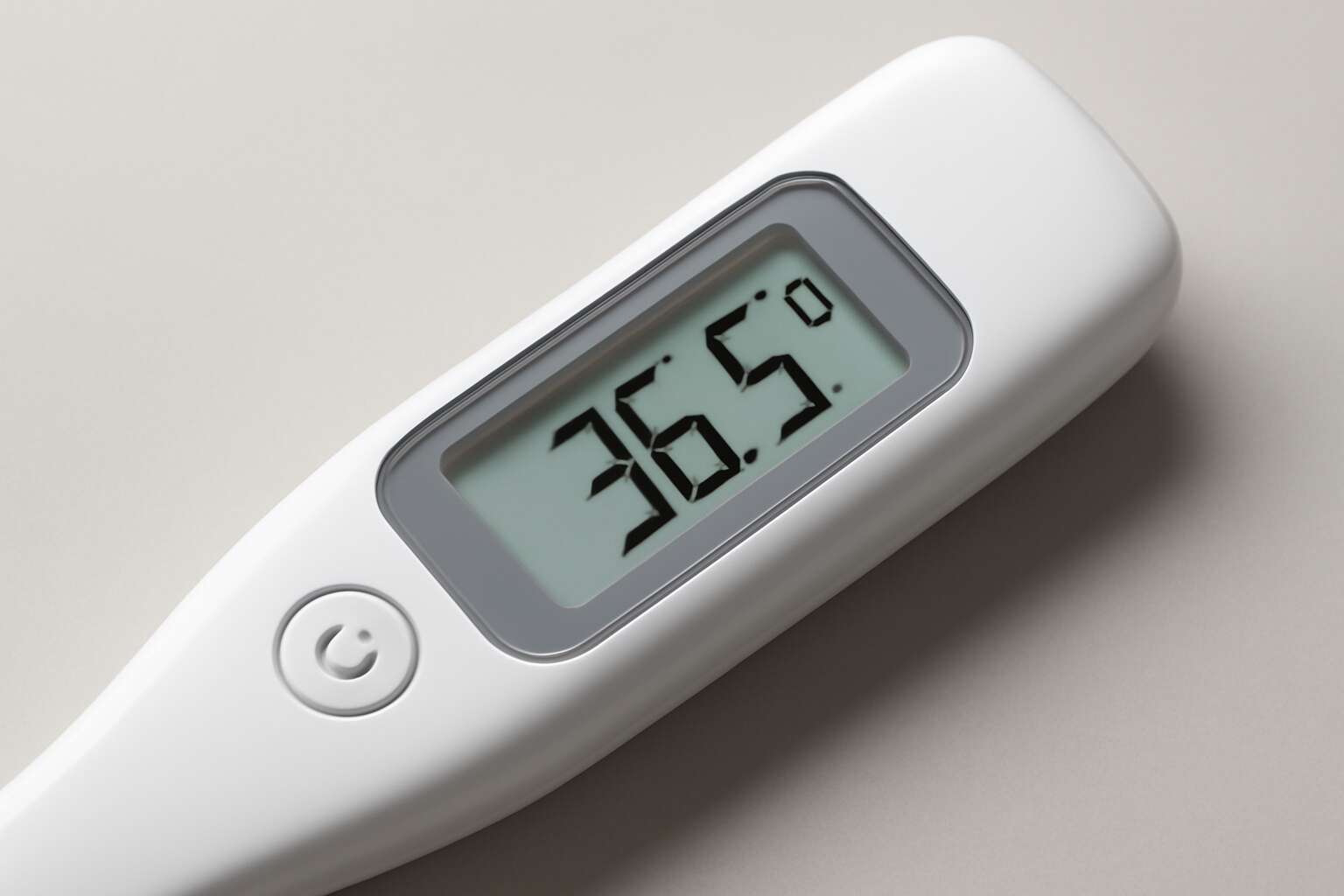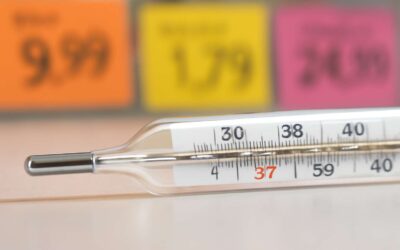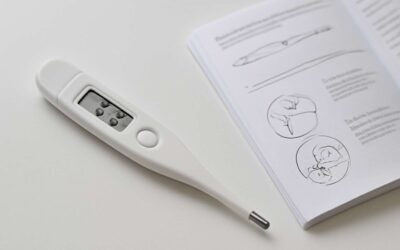Understanding the Types of Thermometers
Digital Thermometers – Features, Usage Tips, Advantages
In the shadowed corners of medical instrumentation, digital thermometers stand as luminous sentinels—precise, swift, and whispering secrets of the human body’s hidden temperature. The modern-era thermometer englisch encapsulates not only technological prowess but also a quiet poetry of health monitoring. These devices often feature an easy-to-read display, quick response times, and sterile, hygienic usage. Their silent efficiency makes them indispensable in sterile environments or at-home care, where every second counts.
What elevates digital thermometers from mere tools to trusted guardians of well-being? Among their advantages are non-invasive measurement methods and versatile usage options—oral, rectal, or axillary. Their digital readouts eliminate ambiguity, presenting a clear temperature that helps in making swift health decisions. Whether you’re checking a child’s fever or monitoring an adult’s condition, understanding the features of a thermometer englisch ensures you select the right device for every scenario.
- Rapid response times for quick, accurate readings
- Memory functions for tracking temperature fluctuations
- Automatic shut-off to conserve battery life
The enchantment of a digital thermometer lies in its seamless fusion of technology and simplicity, a modern artifact whispering tales of health and vigilance—an essential in every household or medical setting. With their unobtrusive presence, these devices silently guard against unseen threats, offering reassurance wrapped in sleek, digital precision.
Mercury and Glass Thermometers – History, Safety Precautions, Proper Usage
Mercury and glass thermometers have a storied past rooted in scientific and medical history. Once considered the gold standard for measuring body temperature, these classic devices rely on the expansion of mercury in a glass tube to indicate a temperature reading. Despite their long-standing use, safety concerns surrounding mercury—the toxic element—have prompted many countries, including South Africa, to phase out or regulate their usage.
When handling a thermometer englisch, safety precautions are paramount. Always ensure it is used correctly to prevent breakage; glass thermometers are fragile and can pose a risk of injury or mercury exposure if broken. Proper usage involves cleaning the device thoroughly before and after each use, avoiding sudden temperature shocks, and storing it safely away from children. Remember, mercury thermometers are no longer recommended in many settings due to environmental and health challenges. Instead, digital or alcohol-based alternatives are more common in contemporary health monitoring.
For accurate readings, it’s essential to follow specific steps. Position the thermometer correctly—whether oral, rectal, or axillary—and wait for the device’s signal indicating the measurement is complete. If you’re using a mercury thermometer, do not shake it down hastily; instead, gently lower the mercury level below the expected body temperature before taking a new reading.
Understanding the different types of thermometers englisch enhances safety and accuracy—key elements in maintaining health in every household and medical environment. The shift from traditional mercury devices toward safer, modern alternatives underscores a broader commitment to environmental health and human safety. From history to practical application, knowing how to handle each type of thermometer is crucial, especially as regulations evolve and technology advances.
Infrared Thermometers – How They Work, Common Uses, Benefits
In the shadowy realm of temperature measurement, infrared thermometers emerge as spectral sentinels, casting their gaze without contact or intrusion. Unlike traditional devices, these thermometers englisch harness the power of infrared technology to detect heat radiating from objects or living beings. Their silent vigil allows for quick, safe assessments—perfect for bustling clinics or haunted households where precision must be swift and discreet.
The magic lies in their ability to read temperature from a distance, transforming invisible heat signatures into tangible data. Common uses include measuring body temperature in medical settings, gauging surface temperatures of machinery, and even monitoring environmental conditions in sensitive environments. The benefits of infrared thermometers are manifold: they eliminate discomfort, reduce cross-contamination, and deliver instant results that seem almost supernatural.
For those who seek a deeper understanding of thermometers englisch, it’s essential to recognize the varied applications that these spectral devices serve. Whether in hospitals or laboratories, their allure lies in the seamless blend of modern science and ancient curiosity about heat, life, and decay. As the shadows lengthen, the silent promise of infrared thermometers persists, ever-watchful in the dance between safety and scientific precision.
Key Vocabulary for Thermometers in English
Terminology for Temperature Readings – Normal, Fever, Celsius, Fahrenheit
Understanding the key vocabulary for thermometers is essential when navigating the world of temperature readings. The term “thermometer englisch” might seem straightforward, but it opens a door to a nuanced language that bridges medical, scientific, and everyday contexts. Whether you’re measuring a fever or checking the weather, knowing these terms can make all the difference.
At the core of temperature measurement are two critical concepts: *normal* and *fever*. Normal body temperature typically hovers around 37°C (98.6°F), but it can vary slightly from person to person. A *fever* is generally recognized when the temperature rises above this baseline, signaling potential illness. The fluctuation between Celsius and Fahrenheit is also pivotal—Celsius being widely used internationally, while Fahrenheit remains common in some regions.
- Celsius: A metric temperature scale where water freezes at 0°C and boils at 100°C.
- Fahrenheit: An older scale where freezing occurs at 32°F and boiling at 212°F.
Grasping these foundational terms in thermometer englisch empowers you to interpret readings accurately, whether you’re at a clinic or home. It’s a language that unlocks a deeper understanding of health and environmental conditions alike.
Parts of a Thermometer – Bulb, Scale, Display, Probe
In the realm of thermometer englisch, understanding the core vocabulary can transform a simple temperature check into a nuanced dance of precision. The parts of a thermometer—bulb, scale, display, and probe—are the silent heroes of accurate measurement. The bulb, typically filled with mercury or alcohol, is the reservoir that responds to temperature changes, signaling when our body or environment is at a certain point. Meanwhile, the scale—whether Celsius or Fahrenheit—translates this visual cue into meaningful numbers that tell a story of health or climate.
Modern thermometers often feature a display, a digital or analog interface that renders readings instantly accessible. In clinical settings, a probe allows for precise measurement, especially in digital thermometers, where quick results are paramount. Whether checking a child’s fever or assessing weather conditions, knowing these parts enhances your grasp of thermometer englisch and ensures you interpret readings with confidence and clarity.
Descriptors for Accuracy and Speed – Precise, Rapid, Reliable
In the intricate world of thermometer englisch, understanding the key vocabulary is essential for anyone seeking precision—whether diagnosing a fever or monitoring environmental conditions. Words like precise, rapid, and reliable are not mere descriptors; they embody the core qualities that define top-tier thermometers. Imagine the difference between a device that provides a quick reading and one that guarantees accuracy every time. This distinction can be a matter of health, comfort, or safety.
When evaluating thermometer englisch, familiarity with the language helps bridge the gap between mere measurement and meaningful insight. In high-stakes contexts, such as medical diagnostics, rapid readings preserve precious time, while reliable measurements underpin correct diagnoses. Whether you’re choosing a digital thermometer or exploring infrared options, these terms frame your understanding of what makes a thermometer truly effective.
How to Use a Thermometer Correctly
Step-by-Step Instructions – Preparing the Thermometer, Taking the Measurement, Recording Results
In the delicate dance of precision, the correct use of a thermometer englisch becomes an art as vital as the heartbeat itself. When preparing your instrument, ensure it is thoroughly cleaned—demonstrating respect for accuracy as sacred. To take a measurement, gently position the thermometer against the chosen site—be it oral, ear, or forehead—handling with care and patience.
For oral readings, place the thermometer under the tongue and close your mouth with a relaxed grip, waiting for the device to signal completion. Infrared thermometers, with their rapid response, demand just a simple aim at the forehead, eliminating discomfort and fostering swift, reliable results. Once the measurement is secured, record your results with meticulous detail—a record that can reveal vital health clues.
Remember, each step echoes the pursuit of truth in every temperature reading, a melody of precision sung softly through a well-used thermometer engelsih.
Safety and Hygiene Tips – Cleaning, Proper Placement, Handling Precautions
Properly using a thermometer englisch is more than just a routine; it’s about ensuring safety, accuracy, and hygiene. Each measurement should be approached with care, especially when handling sensitive equipment. Always start by thoroughly cleaning your thermometer to prevent cross-contamination, using alcohol wipes or soap and water if suitable. This step is vital in maintaining the integrity of each reading and safeguarding health.
When placing the thermometer, choose the correct site—oral, ear, or forehead—and handle with gentle precision. For oral measurements, position the thermometer under the tongue and keep your mouth closed, ensuring a snug fit. Infrared thermometers simplify this process with their quick, non-contact readings—aim at the forehead for speedy results. Proper handling minimizes errors and enhances reliability.
To maintain accuracy over time, store your thermometer in a clean, dry place. Regular calibration can also improve precision. Remember, each step in using a thermometer englisch should prioritize safety and hygiene, fostering trustworthy health assessments in every measurement. Small acts like careful handling and routine cleaning solidify the thermometer’s role as a dependable health monitor.
Common Mistakes to Avoid – Incorrect Placement, Reading Errors, Not Waiting Long Enough
Ensuring accurate temperature readings with your thermometer englisch isn’t just about the device—it’s about technique. One common mistake is incorrect placement. Placing the thermometer in the wrong spot, such as the cheek instead of the forehead when using an infrared thermometer, can give skewed results. Similarly, reading errors often happen when users don’t wait long enough for a measurement to stabilize. For example, with digital thermometers, rushing to read the display before it settles can lead to inaccuracies.
Misinterpretation of the temperature is another frequent slip. Always remember to note whether the measurement is in Celsius or Fahrenheit, as confusing these can lead to misjudging a person’s health. When taking readings, be patient. Different thermometers have specific wait times—skipping this step risks inaccurate data.
To avoid these pitfalls, carefully follow instructions and double-check placement. These small steps dramatically boost the reliability of each measurement, ensuring your thermometer englisch remains a trustworthy health tool.
Thermometer Maintenance and Troubleshooting
Calibration and Accuracy Checks – When to Calibrate, How to Calibrate
Maintaining your thermometer and ensuring calibration accuracy isn’t just routine—it’s essential for trustworthy readings. Over time, even the most reliable thermometer englisch models can drift from their precise calibration, especially with frequent use or harsh environmental conditions. Regular calibration checks safeguard against erroneous measurements that could compromise health or safety.
When should you calibrate? If you notice inconsistent temperature readings or after shock, drop, or exposure to extreme heat, it’s time to recalibrate. Calibration involves comparing your thermometer’s reading against a known standard, like a digital reference thermometer or a calibration bath. If discrepancies appear, calibration becomes necessary to restore accuracy.
Breathing new life into your thermometer englisch begins with proper calibration devices and step-by-step instructions—like immersing the sensor in a controlled temperature environment and adjusting the scale until it aligns perfectly with the standard. A thermometer that’s out of sync can lead to inaccurate health assessments or faulty industrial processes. Regular troubleshooting and calibration checks aren’t just maintenance—they’re safeguards ensuring every reading remains as reliable as the day you first used it.
Cleaning and Storage – Best Practices, Material Considerations
In the intricate dance of precise measurement, thermometers stand as silent sentinels. Yet, even the most vigilant thermometer englisch models demand tender care beyond their initial calibration. Proper maintenance transforms mundane tasks into rituals of trust—each cleaning and careful storage session a promise of unwavering accuracy. When neglected, dirt and debris can clandestinely distort readings, casting shadows over health assessments or industrial processes. Regularly inspecting and cleaning your thermometer with soft, non-abrasive materials ensures its sensor remains pristine and responsive.
Storage is equally paramount. Always keep your thermometer englisch in a dedicated case or designated area—protected from extreme temperatures, dust, and moisture. Consistency in placement preserves calibration integrity and prolongs device life. If inconsistencies or unpredictable readings arise, troubleshooting begins with a thorough check for dirt, damage, or improper storage. Sometimes, a gentle wipe or repositioning is enough; other times, calibration adjustments might be necessary to restore the device’s reliability.
- Ensure your thermometer is stored in a temperature-controlled environment.
- Regularly inspect for signs of damage or residue that could compromise measurements.
- Keep the probe clean and free from contaminants, especially after use in harsh environments or with liquids.
By adhering to these best practices, every thermometer englisch becomes not just a tool, but a trustworthy ally—ready to deliver precision with each reading, as steadfast as the dawn’s first light.
Troubleshooting Common Issues – Blown Fuses, Display Problems, Mechanical Failures
In the world of precise measurement, understanding the nuances of your thermometer englisch can mean the difference between clarity and confusion. Even the most advanced digital or infrared thermometer englisch models are susceptible to issues that can compromise reliability. Troubleshooting common problems requires patience and knowledge—knowing where to look and what to do when readings become inconsistent or devices fail altogether.
Blown fuses are a frequent culprit behind display problems in electronic thermometers. To address this, start by inspecting the fuse—if it’s visibly blown or the device suddenly ceases to power on, replacing the fuse may restore functionality. Mechanical failures, such as a broken probe or damaged display, often demand a closer look at internal components. Regular inspection and gentle handling can prevent many of these issues from escalating.
- Check for signs of dirt or residue that could interfere with sensor accuracy.
- Verify that the device is stored in a temperature-controlled environment, preventing internal component fatigue.
- Test the battery life—weak batteries can cause erratic readings or power failures.
When irregularities persist after basic troubleshooting, calibration adjustments or professional repairs might be necessary. Remember, maintaining the integrity of your thermometer englisch isn’t just about prolonging its lifespan; it’s about safeguarding the accuracy and trustworthiness of every temperature reading, which is utterly vital—be it in a medical, industrial, or culinary setting.




0 Comments